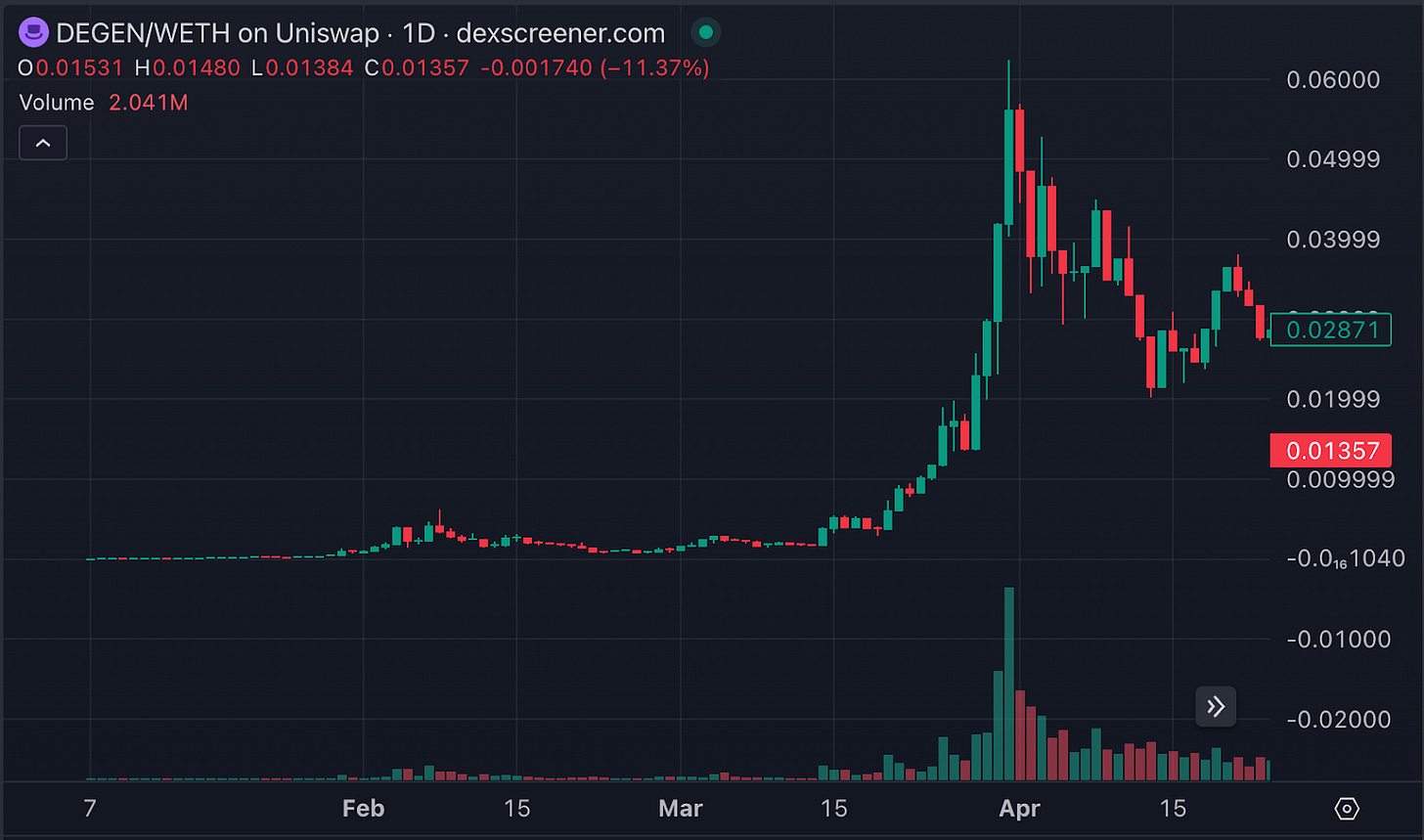Layer 3 Landscape
Ushering in a new wave of highly customizable, performant rollups
Ethereum has made considerable progress on it’s roadmap over the last couple years, completing its transition from Proof of Work (PoW) to Proof of Stake (PoS), otherwise known as “The Merge”, and more recently, undergoing the “Dencun” upgrade, which included proto-danksharding, making Layer 2 transactions much cheaper.
Before Dencun, L2 transaction fees were ~$0.50, and now for most L2 chains, transactions are only a penny or two, give or take. This is a huge unlock, as it opens up the door for new applications to finally scale on Ethereum again, and this has translated to a noticeable change in activity since the upgrade.
Since mid-March when Dencun happened, both Arbitrum and Base daily transactions flipped Ethereum mainnet and never looked back (excluded the L2s that have yet to launch a token due to inorganic airdrop farming activity).
While there is still a lot of work to be done to scale Ethereum, this is a promising step in the right direction, and the infrastructure has definitely improved since last cycle. Increased activity and volume on chains like Arbitrum and Base the last few months is likely just the tip of the iceberg for what’s to come this cycle.
Layer 3 Scaling
The first iterations of Ethereum “rollups” were Optimism and Arbitrum, both optimistic rollups. There is an ever-growing list of Layer 2 optimistic and zero-knowledge rollups, most of which would be classified as general purpose. The type of rollup that an application may choose to run on or establish themselves is highly dependent on the feature set and security requirements they seek. Some applications are fine running on Arbitrum One (the general purpose L2), such as Uniswap. However, if you are a crypto game or NFT project or other application that requires higher throughput or $0.0001 transaction fees, you may require a bit of a different solution. This is where Layer 3 comes in.
Examples of Layer 3 frameworks are Arbitrum Orbit and zkSync Hyperchains. It is still very early days for L3’s in general, and it’s reasonable to expect there to be some changes and improvements made along the way. However, the general idea for L3’s is to further scale Ethereum by creating highly customizable, cheap, fast, and interoperable chains, with varying degrees of security and decentralization.
Degen Chain (DEGEN)
A fitting name for an innovative new blockchain in crypto, Degen chain was launched in January 2024 and quickly caught attention as DEGEN reached a FDV north of $2B within 3 months of launch.
While Degen chain wasn’t the first L3 to launch, it put Layer 3’s on the radar for a lot of people. Degen chain originally launched in the Degen channel on Farcaster, a new social app, and it allowed users to “tip” for producing good content on the platform.
Degen is built using Arbitrum Orbit, settles to Base, and uses AnyTrust for data availability (DA). The initial hype of the chain caused TVL to skyrocket, but it has since leveled off and the price of DEGEN has followed.
Sanko (DMT)
Perhaps an even more interesting application of L3’s is Sanko, another Arbitrum Orbit chain that settles to Arbitrum L2 and uses AnyTrust for DA. Sanko’s main focus is on NFTs and gaming, taking advantage of the low cost and high throughput that L3’s have to offer. Sanko’s native token, DMT, powers the ecosystem, being used as a medium of exchange and gas token. DMT has had an impressive run in 2024 so far.
The Dream Machine (gaming) is an interesting use case of the Sanko L3. However, Sanko is also a social platform and gaming platform in one, with Sanko.TV combining the gaming side with the streaming side of entertainment. Users can buy passes for their favorite streamers and get access to private chat rooms, similar to the way Friend.tech operates.
Sanko is an innovative approach to L3 chains, showing what is possible with the customizable nature of Layer 3. The run in price of DMT shows significant sustained interest in what is being built on Sanko, and the innovative nature of gaming and social combined is an intriguing value proposition. Social applications are beginning to gain momentum, so Sanko is definitely a project to keep track of.
Future of L3 Chains
We are now a few years into Layer 2 chains being live on mainnet, and significant progress has been made to scale Ethereum. While the scaling roadmap continues to play out, Layer 3 chains with lots of customizability seem to be the logical next step. There are lots of projects already experimenting with L3s, and there has been varying progress made.
Furthermore, an interesting use case and small periods of hype do not necessarily translate to a good investment. In both of the examples we covered (DEGEN and DMT), the native tokens experienced significant volatility, and these chains are far from proven. However, now that L2’s have scaled and offer transaction fees of a penny or two, the opportunities and use cases have expanded immensely. It will be important to follow the trends in the types of applications that are launching as a result of the increased throughput and ability for customizability, and there are certainly going to be some interesting investment opportunities to come out of Layer 3s.









